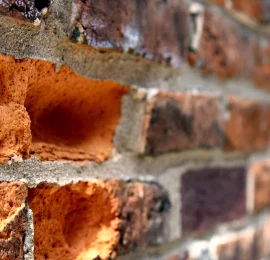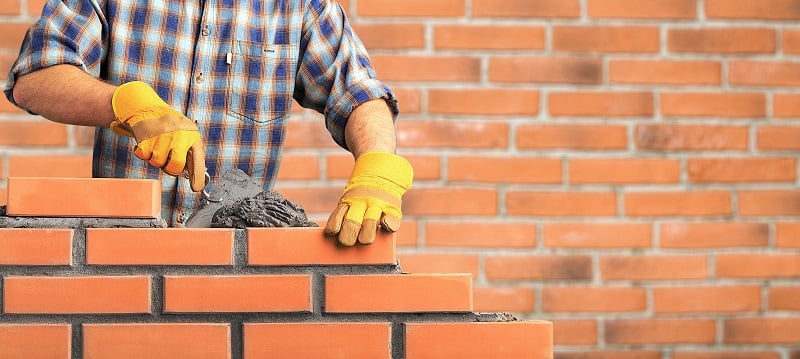Opening the Keys of Lasting Stonework Construction Practices for Eco-Friendly Structures
Among the myriad approaches to green building, lasting masonry building and construction stands out as a time-tested and long lasting approach that holds a riches of untapped possibility. From the choice of products to innovative building and construction techniques, the tricks to attaining sustainability within stonework construction are multifaceted and appealing.
Benefits of Sustainable Masonry Building And Construction
Accepting sustainable masonry construction methods not only minimizes ecological effect however additionally uses long-lasting economic benefits to contractors and areas. By using materials like recycled bricks, obstructs, and rocks, builders can dramatically reduce the carbon footprint of their tasks while advertising source effectiveness. Furthermore, sustainable stonework building strategies, such as correct insulation and thermal mass properties, can enhance power performance within structures, resulting in decreased functional prices gradually.
Moreover, the toughness and strength of masonry structures add to lasting financial advantages. Buildings built making use of lasting masonry methods frequently require much less upkeep and repair work, translating to cost savings for contractors and home owners. The durability of stonework products additionally makes certain that structures remain stable and safe and secure, reducing the need for regular improvements or replacements.
Eco-Friendly Masonry Materials
Utilizing green masonry products is a crucial action in the direction of enhancing the sustainability of building and construction techniques and reducing ecological impact while maximizing long-lasting financial advantages. Lasting stonework products are sourced, generated, and utilized in a manner that minimizes overall environmental influence. Materials such as recycled blocks, redeemed rock, and sustainable cinder block are becoming increasingly prominent options for eco-conscious home builders. Recycled bricks, for instance, not only divert waste from land fills but likewise need less power to produce compared to new blocks. Redeemed rock provides a special visual appeal while minimizing the requirement for new quarrying. Lasting concrete obstructs include recycled aggregates and may include better insulation residential or commercial properties, adding to power effectiveness in buildings.
Furthermore, all-natural products like adobe, rammed earth, and straw bundles supply superb thermal mass buildings, lowering the demand for home heating and cooling down power. These materials are often in your area readily available, advertising regional economies and reducing transportation-related carbon discharges. By picking environmentally friendly masonry materials, building projects can significantly lower their ecological footprint and add to the production of healthier, a lot more lasting built atmospheres.
Energy-Efficient Stonework Techniques
Power performance plays a vital role in enhancing the sustainability of masonry building techniques. By carrying out energy-efficient masonry strategies, building contractors can significantly decrease the general energy intake of a building, resulting in lower functional costs and a smaller ecological impact. One key energy-efficient masonry method is using thermal mass, which involves including dense products like concrete or brick right into the building's framework to absorb and keep warm. This assists control interior temperature levels, lowering the need for mechanical home heating and cooling systems.

Technologies in Lasting Masonry
Current innovations in lasting masonry techniques have actually caused cutting-edge techniques that are look at here now reshaping the building and construction market. One such development is the growth of self-healing concrete, which utilizes microorganisms embedded within the concrete to heal cracks autonomously. This breakthrough not only decreases maintenance costs but also enhances the longevity of masonry frameworks, adding to their sustainability.
An additional significant advancement is using recycled aggregates in masonry construction - masonry contractor. By incorporating products such as smashed ceramic waste or recycled glass right into concrete blends, contractors can reduce the environmental influence of building and construction jobs while preserving structural stability. This practice not only diverts waste from land fills however additionally preserves natural deposits, making it a vital development in sustainable stonework building and construction
Furthermore, the assimilation of electronic layout tools, such as Structure Info Modeling (BIM), is revolutionizing the means masonry structures are prepared and built. BIM enables more exact computations, reduced material wastage, and boosted power performance, eventually causing more lasting building practices. These technologies collectively represent an appealing future for sustainable stonework building in the period of green structures.
Future Trends in Masonry Sustainability
With the cutting-edge strides made in sustainable masonry practices, the future fads in masonry sustainability are poised to more change the building and construction market. Among the crucial fads shaping the future of stonework sustainability is the enhanced assimilation of technology. Improvements such as Structure Info Modeling (BIM) and online fact simulations are being utilized to enhance masonry building procedures, leading to minimized product waste and improved power effectiveness in buildings.
Furthermore, the growth of unique lasting materials is set to play a considerable duty in enhancing the eco-friendliness of stonework building and construction. masonry contractor. Advancements like self-healing browse around here concrete, recycled accumulations, and bio-based binders are gaining traction for their capability to decrease environmental effect while preserving structural integrity

Conclusion
To conclude, lasting masonry building and construction practices supply various advantages for environmentally friendly structures. By utilizing environment-friendly materials and energy-efficient methods, stonework can contribute to a much more lasting built atmosphere. Innovations in sustainable stonework are continuously being developed to further enhance the ecological efficiency of structures. Looking in the direction of the future, the Learn More pattern of masonry sustainability is anticipated to expand, resulting in more eco-friendly and energy-efficient building and construction techniques in the years to come.